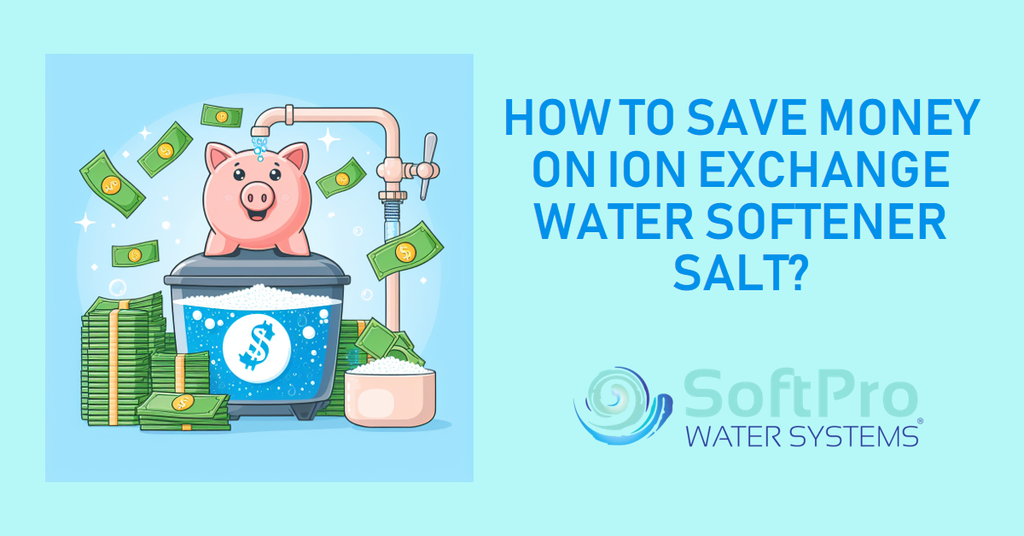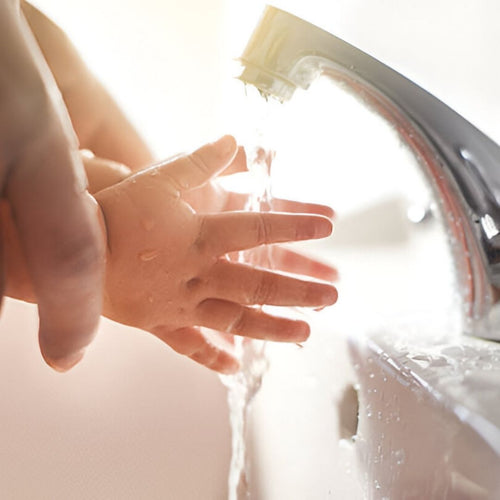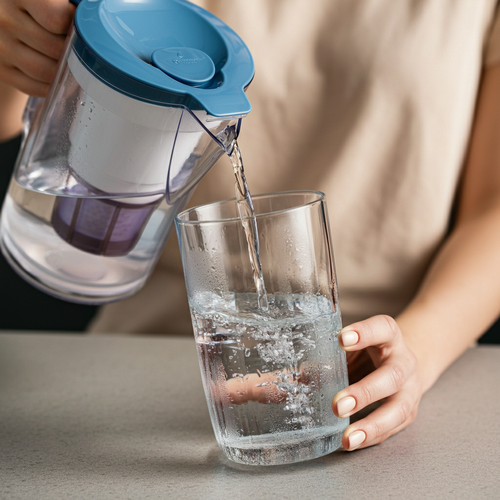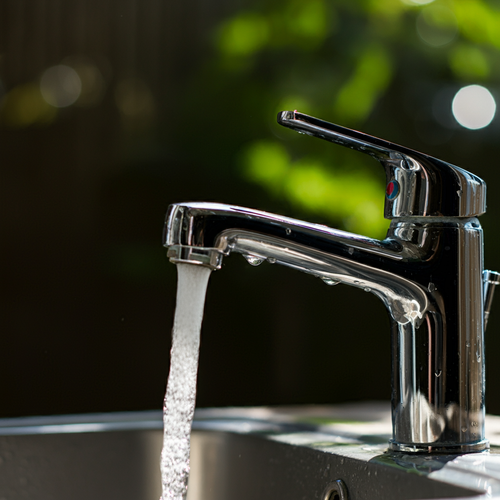Understanding the Cost of Water Softener Salt
Water softener salt typically costs between $4 and $10 per 40-pound bag, depending on the type of salt, brand, and location. Several factors influence the overall cost of water softener salt, including:
- Water hardness: Homes with harder water require more frequent regeneration cycles, leading to greater salt consumption.
- Water usage: Households using more water will naturally need more salt to maintain soft water.
- Type of salt: Potassium chloride salt generally costs more than sodium chloride salt.
- Regeneration frequency: Adjusting regeneration cycles to optimize salt usage can significantly impact costs.
Saving money on water softener salt is important for several reasons:
- Reduces household expenses: Lowering salt costs can translate to noticeable savings on utility bills.
- Extends the lifespan of the water softener: Efficient salt usage minimizes wear and tear on the system.
- Promotes environmental sustainability: Conserving salt reduces the environmental impact associated with salt production and transportation.
Choosing the Most Cost-Effective Salt Type
The most cost-effective water softener salt depends on several factors, including your water hardness, budget, and health considerations. Let's break down the three main types of salt:
1. Sodium Chloride (NaCl)
- Most common and affordable salt option. A 40-pound bag typically costs between $4 and $7.
- Highly effective at softening water. Suitable for most household applications.
- Not ideal for individuals on sodium-restricted diets. Potassium chloride might be a better choice in such cases.
2. Potassium Chloride (KCl)
- A good alternative for sodium-restricted individuals. Costs slightly more than NaCl, typically between $6 and $10 per bag.
- Effective for mild to moderately hard water. May not be as efficient as NaCl for very hard water.
- Does not pose the same sodium concerns as NaCl. Can be beneficial for those with heart disease or high blood pressure.
3. Low-Sodium Salt Alternatives
- Various formulas combining NaCl with other minerals to reduce sodium content. Costs similar to KCl, ranging from $6 to $10 per bag.
- Varying effectiveness. Some formulas may not be as efficient as NaCl or KCl at softening water.
- May still contain some sodium. Carefully read the label to determine the sodium content.
Here are some additional factors to consider when choosing a salt type
- Water hardness: For very hard water, NaCl might be the most efficient option. For mild to moderate hardness, KCl or low-sodium alternatives might be suitable.
- Budget: NaCl is the most budget-friendly option. If sodium isn't a concern, NaCl might be the best choice.
- Health considerations: Individuals on sodium-restricted diets should choose KCl or low-sodium alternatives.
Buying Water Softener Salt in Bulk
Buying water softener salt in bulk can be a significant cost-saving strategy, often offering savings of up to 50% compared to purchasing smaller bags. However, it's crucial to weigh the potential savings against practical considerations like storage space and the risk of salt bridging.
Here's what you need to know about buying water softener salt in bulk:
Calculating Bulk Purchase Savings
- Compare unit prices: Calculate the price per pound of salt for both bulk and individual bag options.
- Consider storage costs: Factor in the cost of renting a storage unit or purchasing appropriate containers for bulk salt.
- Account for transportation: If purchasing bulk salt online, factor in shipping costs.
Finding the Best Deals
- Local vs. online retailers: Compare prices and delivery options from local water treatment stores and online retailers.
- Price comparison tools: Utilize online tools to compare prices and find the best deals from various vendors.
- Membership programs: Some retailers offer bulk discounts or membership programs for frequent buyers.
Safe and Efficient Bulk Storage Practices
- Humidity control: Store salt in a dry, well-ventilated space to prevent clumping and bridging.
- Pest prevention: Use airtight containers or lids to protect the salt from rodents and insects.
- Rotation system: Implement a system for rotating salt bags, using older bags first to avoid spoilage.
Minimizing Salt Usage through Regeneration Cycles
Optimizing your water softener's regeneration cycles can significantly reduce salt consumption without compromising water softness. While regeneration is necessary to replenish the resin bed with salt, frequent or unnecessary cycles can lead to wasted salt and higher costs.
Understanding Regeneration Cycle Settings
- Frequency: This setting determines how often the softener regenerates. Frequent cycles use more salt but might be necessary for homes with harder water or higher water usage.
- Duration: This setting determines the length of each regeneration cycle. Shorter cycles use less salt but might not clean the resin bed as thoroughly.
- Water flow: Some softeners offer adjustable water flow rates during regeneration, impacting salt usage and effectiveness.
Optimizing Cycles Based on Water Usage
- Smart features: Utilize built-in water meter technology to adjust regeneration frequency based on actual water usage.
- Manual adjustments: Monitor your water usage and adjust regeneration frequency accordingly. Reducing frequency for periods of low water usage can save salt.
- Demand-based regeneration: Consider advanced softeners with sensors that trigger regeneration only when necessary, minimizing wasted salt.
Measuring the Impact of Cycle Adjustments
- Track salt consumption: Monitor the amount of salt used before and after adjusting cycles to gauge the impact on efficiency.
- Water hardness tests: Regularly test your water hardness to ensure your regeneration settings are still appropriate.
- Professional assistance: Consult a water treatment professional for personalized advice on optimizing your softener's settings.
Maintaining Your Water Softener for Efficient Salt Usage
Regularly maintaining your water softener is crucial for ensuring optimal salt usage and preventing issues that can lead to increased salt consumption. By addressing concerns like salt bridging and clogged components, you can promote efficient operation and save money on salt over the long term.
Preventing Salt Bridging and Clogging
- Cleaning the salt tank: Regularly remove accumulated salt residue and brine sludge from the tank to prevent salt bridging and blockages.
- Inspecting the brine distributor: Ensure the brine distributor isn't clogged or damaged, as this can hinder proper salt flow and regeneration.
- Choosing the right salt level: Maintain a recommended salt level in the tank to avoid bridging and ensure adequate brine concentration.
Identifying Signs of Salt Bridging
- Reduced water flow: If your water softener outputs noticeably less water, it could indicate salt bridging blocking the brine flow.
- Irregular regeneration: Uneven regeneration cycles or failure to regenerate could be signs of salt bridging or other issues.
- Increased salt consumption: A sudden spike in salt usage without a corresponding increase in water usage is a potential indicator of bridging.
Exploring Alternative Water Softening Options
While ion exchange water softeners using salt remain the most common, several alternative softening options are emerging, each with its own advantages and disadvantages regarding salt usage:
1. Magnet-Based Softeners
- Claim to condition water through magnetic fields, potentially reducing scale buildup without salt.
- Effectiveness largely unproven with limited scientific backing.
- May not be suitable for all water types or hardness levels.
- Potentially cost-effective in the long run if effective, but initial investment can be high.
2. Template Assisted Crystallization (TAC) Systems
- Utilize a special media to template and trap hard water minerals into inactive crystals without salt.
- Generally effective for moderately hard water but may not be as efficient for very hard water.
- Requires periodic cartridge replacements, adding to ongoing costs.
- Environmental benefits due to reduced salt usage and wastewater discharge.
3. Electrolytic Softeners
- Generate low levels of chlorine through electrolysis, inhibiting scale formation without salt.
- Effective for mild to moderately hard water but may not be suitable for very hard water.
- Requires regular cleaning of electrodes to maintain effectiveness.
- Lower operating costs compared to salt-based systems but higher initial investment.
4. Blended Water Softening Systems
- Combine different technologies like TAC and electrolysis for broader effectiveness across various water hardness levels.
- Offer potentially lower salt usage and reduced environmental impact compared to traditional softeners.
- Can be complex to install and maintain, requiring professional expertise.
- Higher initial cost compared to standard salt-based systems.
Choosing the Right Alternative
- Consider water hardness: Select a system effective for your specific water hardness level.
- Evaluate budget: Weigh the initial and ongoing costs of different options against potential salt savings.
- Environmental impact: Prioritize systems minimizing salt usage and wastewater discharge if sustainability is a concern.
- Seek professional advice: Consult a water treatment specialist for personalized recommendations based on your water and needs.
Conclusion: Saving Money on Water Softener Salt
Saving money on water softener salt isn't just about pinching pennies; it's about optimizing your home's water usage, minimizing environmental impact, and extending the lifespan of your valuable appliance. By implementing the strategies outlined in this guide, you can achieve significant cost reductions without compromising soft water quality.
Key Takeaways
- Choosing the right salt type: Opt for sodium chloride for general effectiveness and affordability, potassium chloride for sodium-restricted diets, and consider low-sodium alternatives for a balance.
- Bulk purchasing: Explore bulk options for potential savings of up to 50%, but weigh storage requirements and salt bridging risks.
- Optimizing regeneration cycles: Adjust frequency and duration based on water usage and hardness to minimize unnecessary salt consumption.
- Maintaining your softener: Regular cleaning and upkeep prevent salt bridging and clogs, ensuring efficient salt usage.
- Exploring alternatives: Consider emerging technologies like magnet-based, TAC, and electrolytic systems for potentially reduced salt usage, depending on your water hardness and budget.
Beyond the Salt Savings
Remember, saving money on water softener salt goes hand-in-hand with other benefits:
- Reduced environmental impact: Lower salt usage translates to less salt production and wastewater discharge, benefiting the environment.
- Extended softener lifespan: Efficient salt usage minimizes wear and tear on the system, potentially prolonging its life.
- Peace of mind: Knowing you're optimizing your water softener's performance and minimizing costs can bring a sense of satisfaction and control over your home's water usage.
Every home and water source is unique. Experiment with different strategies, monitor your salt usage, and consult a water treatment professional for personalized guidance to maximize your salt savings and enjoy the benefits of soft water with minimal environmental impact.


















![Aldex Premium 10% Cross Link Resin for Water Softener [High Capacity]-SoftPro® Water Systems](http://www.softprowatersystems.com/cdn/shop/files/Aldex_10_Cross_Link_Resin_Premium_High_Capacity_for_Water_Softener_600x.jpg?v=1735853599)






















